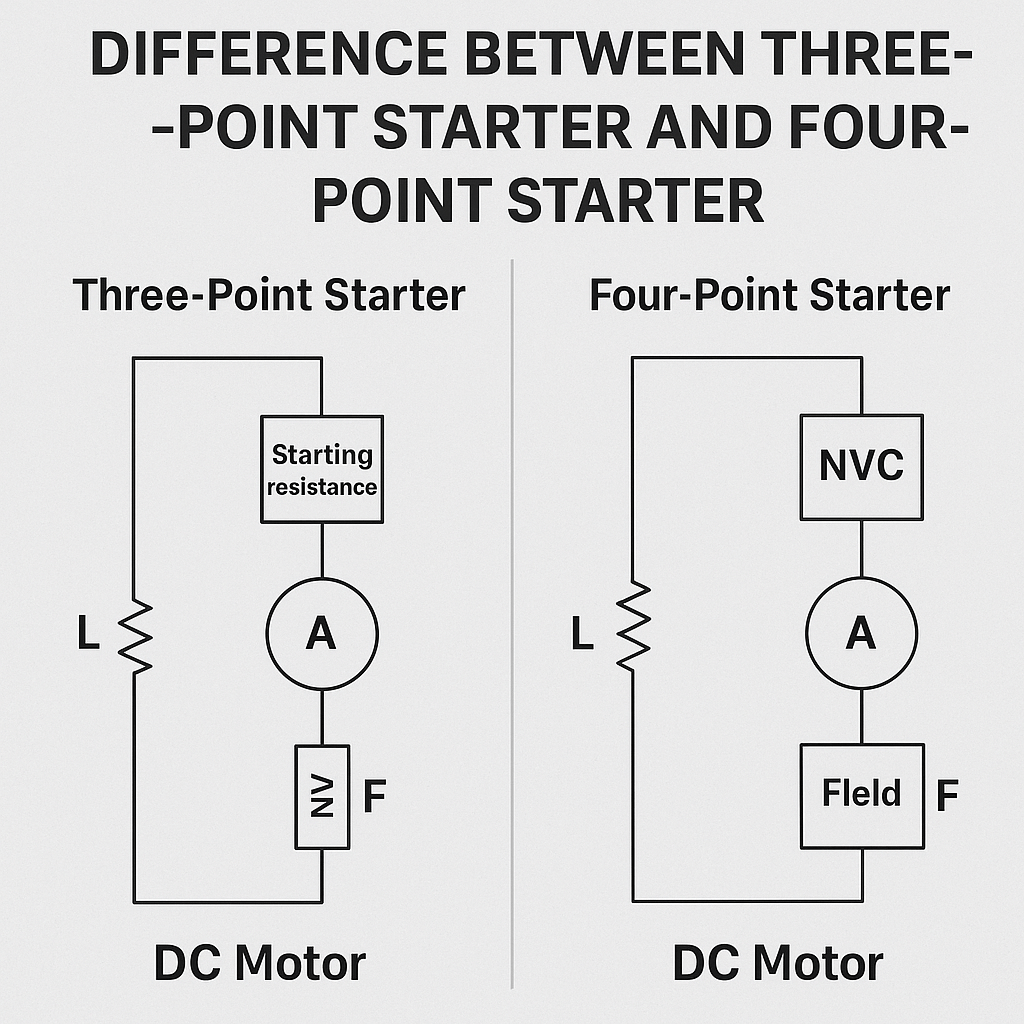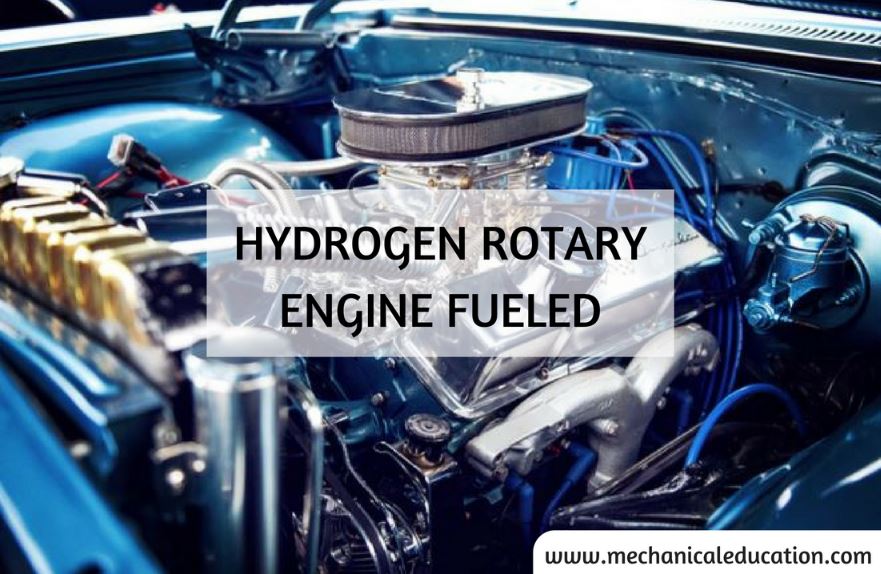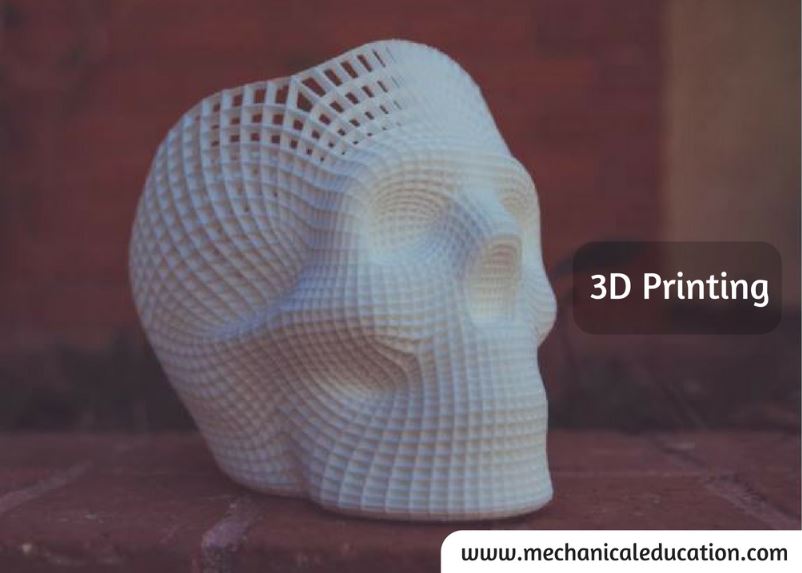✅ What is a Starter in a DC Motor?
A starter is a protective and controlling device used in DC motors to limit the initial high starting current. At the moment of starting, the motor doesn’t generate back EMF (electromotive force), and this can lead to a sudden high inrush of current. A starter gradually increases the voltage applied to the motor and helps in safe acceleration.
☑️ Difference Between Three-Point and Four-Point Starter
Three-point starter and four-point starter are used for the same purpose, but they differ in design and working principle. The main difference lies in how the no-voltage coil (NVC) is connected in the circuit.
🔍 Detailed Explanation:
✅ Three-Point Starter:
- It has three terminals: Line (L), Armature (A), and Field (F).
- The no-voltage coil (NVC) is connected in series with the field winding.
- If the field current changes (due to resistance adjustment or weakening), the NVC may not hold the handle, causing the motor to stop even when voltage is present.
- Not suitable for applications requiring variable field control.
✅ Four-Point Starter:
- It has four terminals: Line (L), Armature (A), Field (F), and an extra point for NVC.
- The no-voltage coil is separately connected to the supply (not in series with the field).
- Even if field current is adjusted, the NVC gets a constant supply, so it keeps holding the starter handle.
- It is better for motors that use field weakening methods for speed control.
Diagram: Three-Point and Four-Point Starter

📊 Comparison Table
| Feature | Three-Point Starter ☑️ | Four-Point Starter ✅ |
|---|---|---|
| 🔌 Number of Terminals | 3 (L, A, F) | 4 (L, A, F, NVC) |
| 🔁 NVC Connection | In series with the field winding | Connected directly to supply |
| ⚠️ Field Current Variation Impact | May drop the handle if field current is reduced | No impact on NVC, motor keeps running |
| 🔄 Speed Control Support | Not suitable for field weakening method | Best suited for field weakening speed control |
| 🛡️ Protection | Provides basic protection | Provides better protection & stability |
| ⚙️ Application Suitability | Used in simple DC motor operations | Used where speed control is essential |
✅ Conclusion:
Both starters serve the purpose of safely starting a DC motor, but:
- Use a Three-Point Starter if the motor runs at a fixed speed without field control.
- Use a Four-Point Starter if speed control (via field weakening) is necessary, ensuring stable operation even when field current is adjusted.




